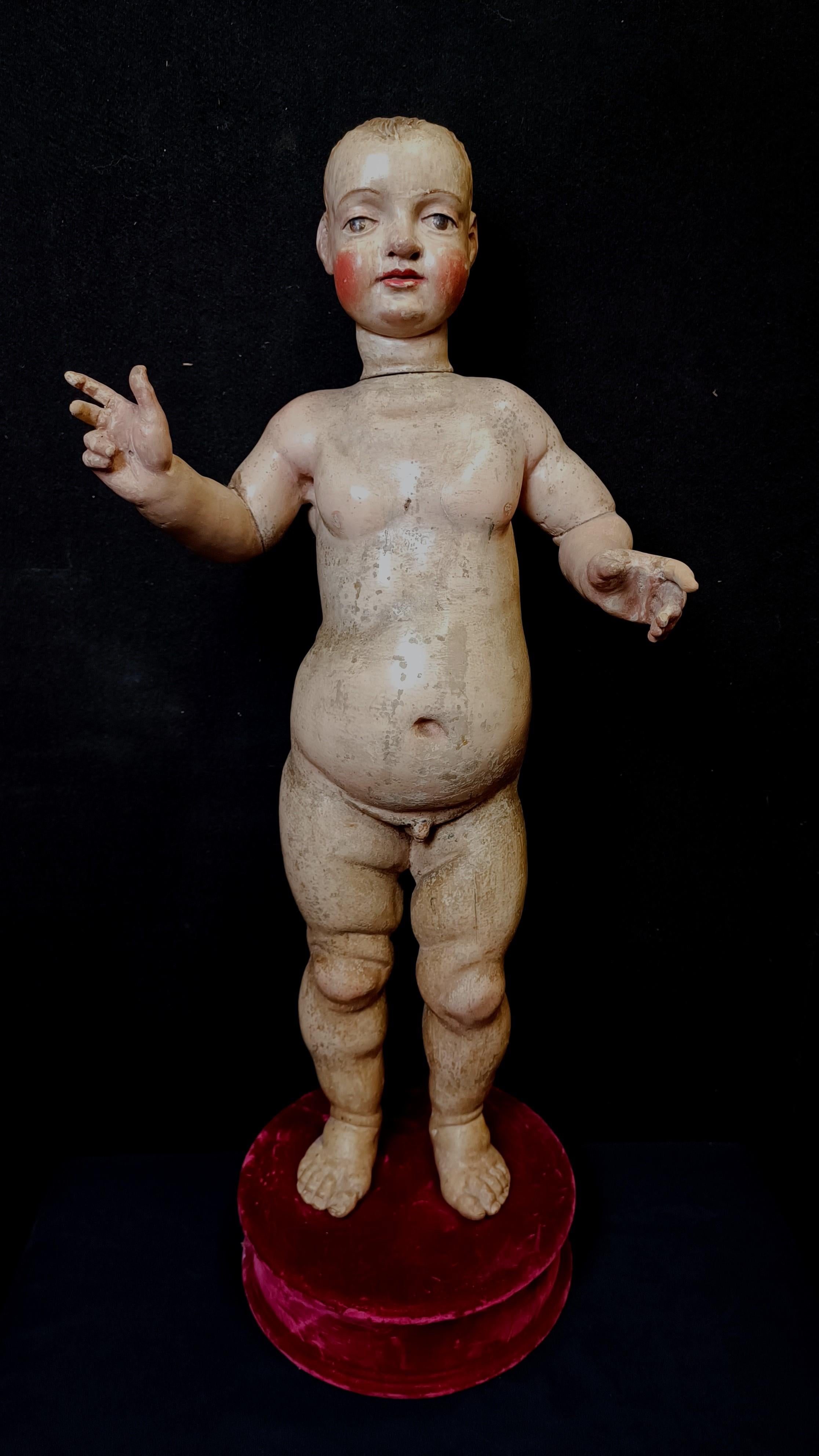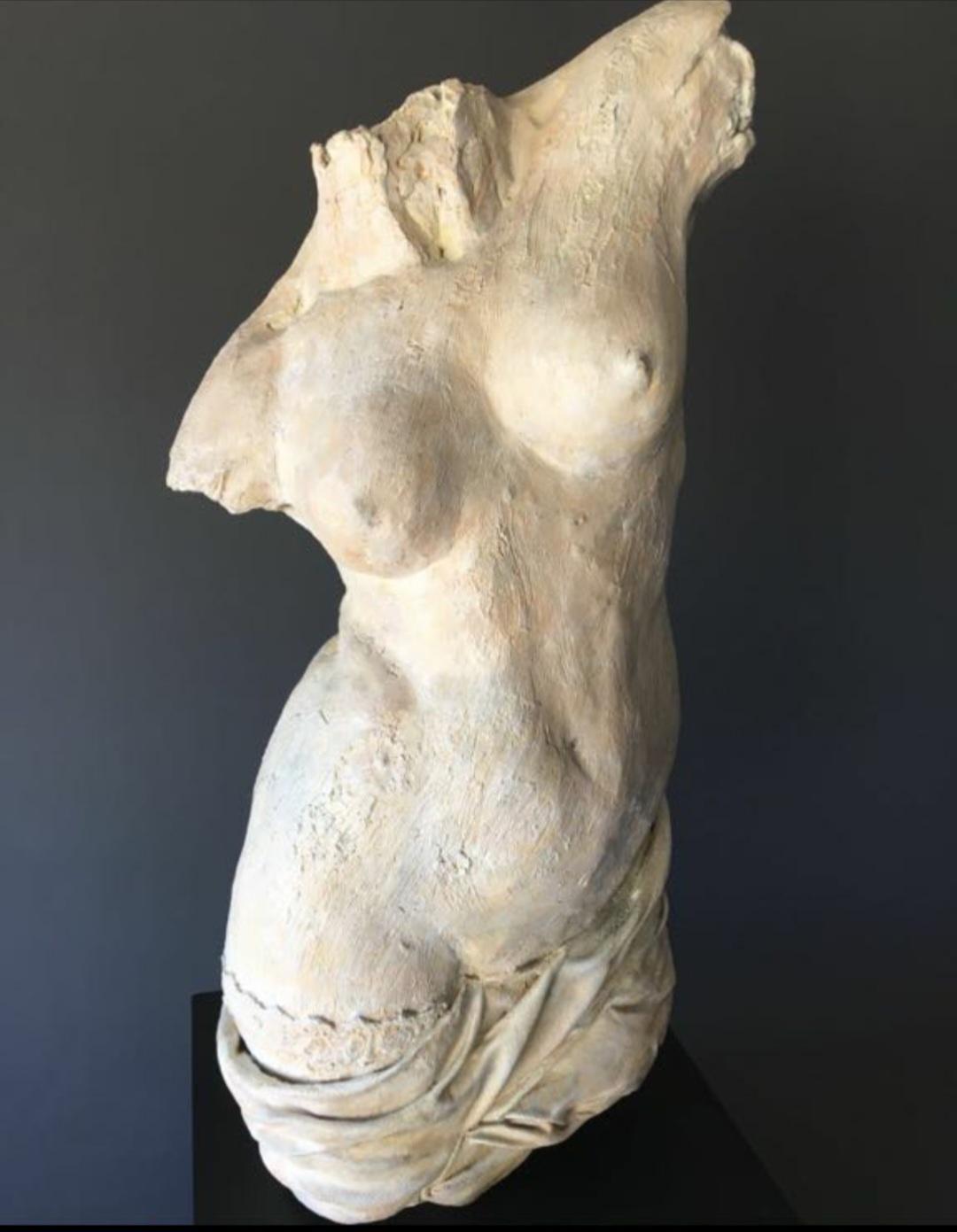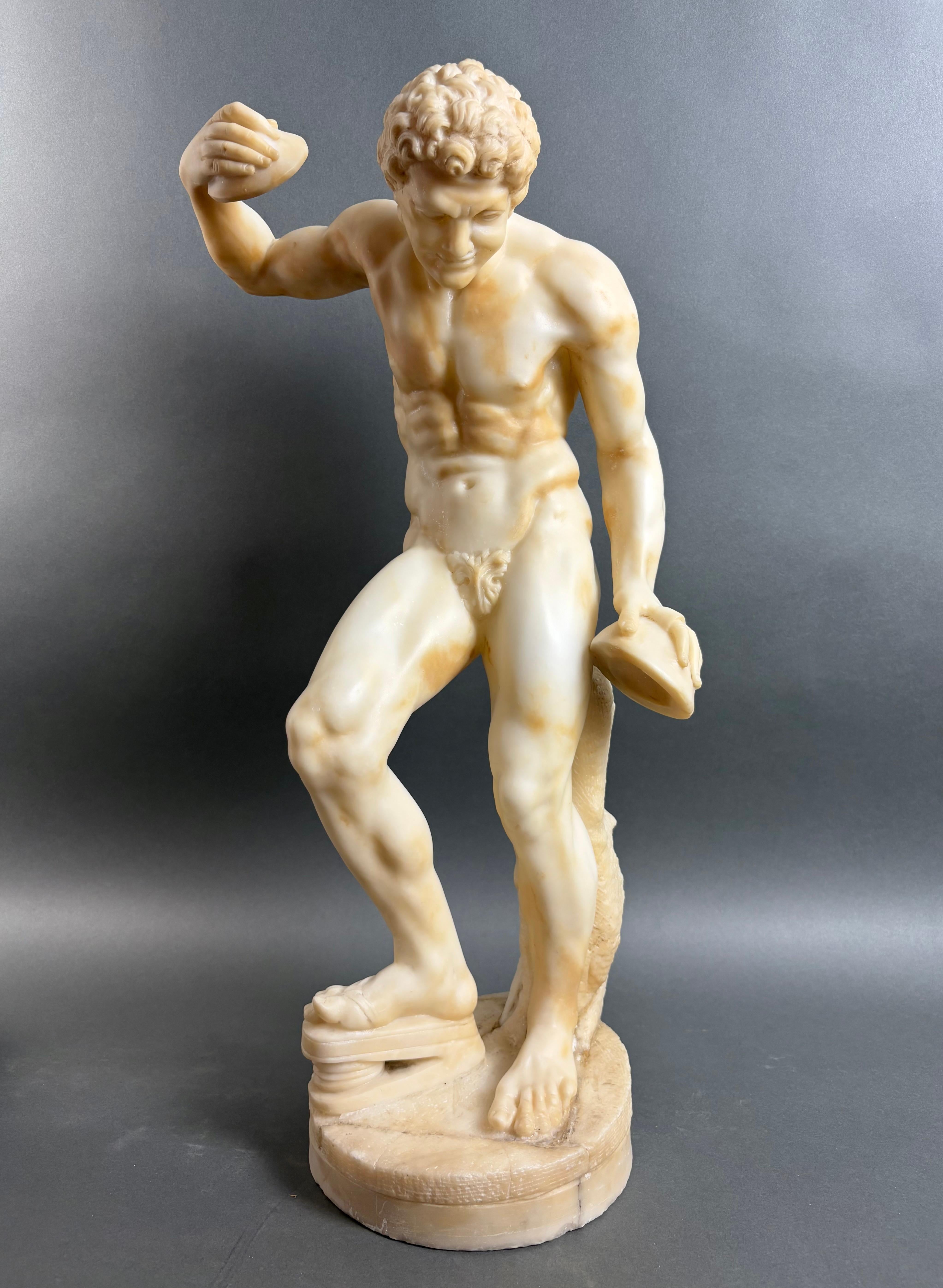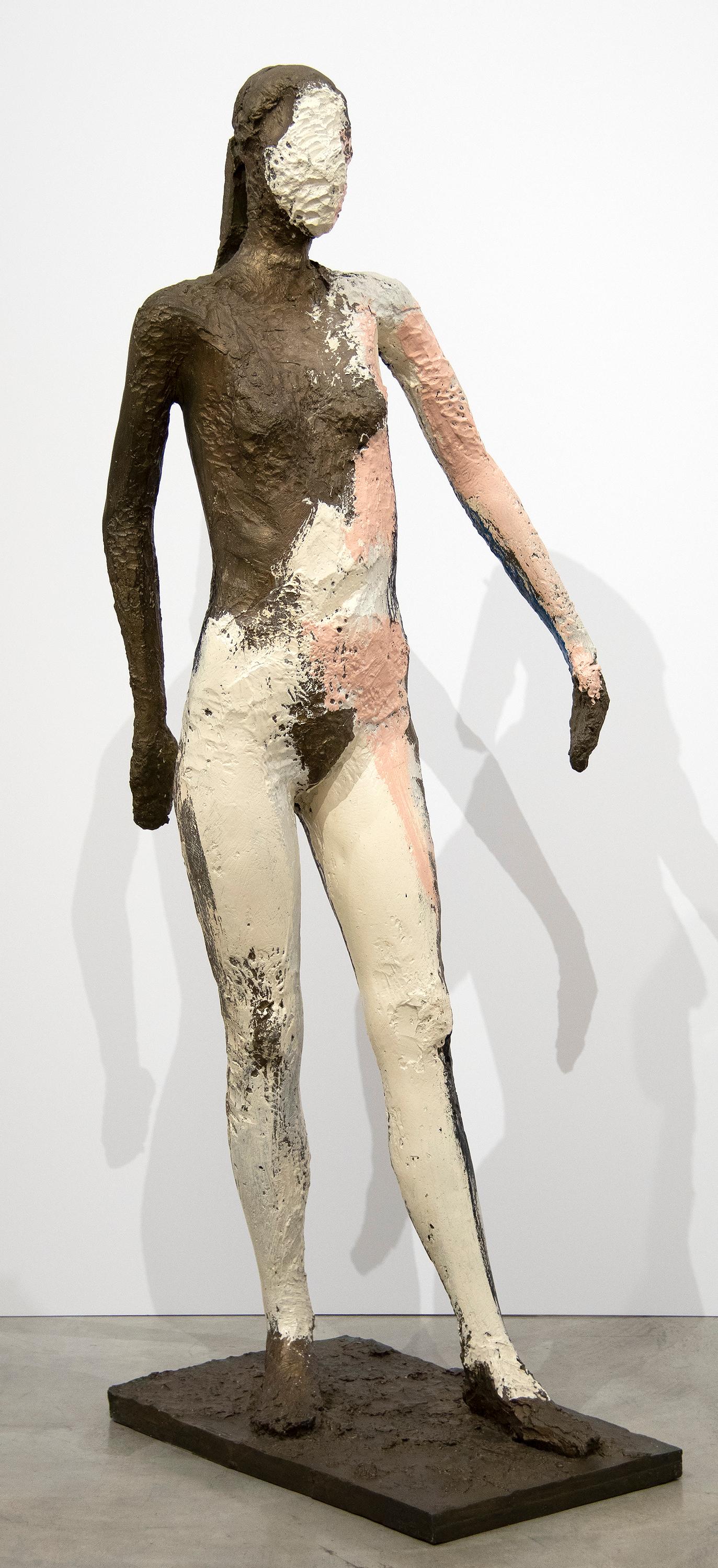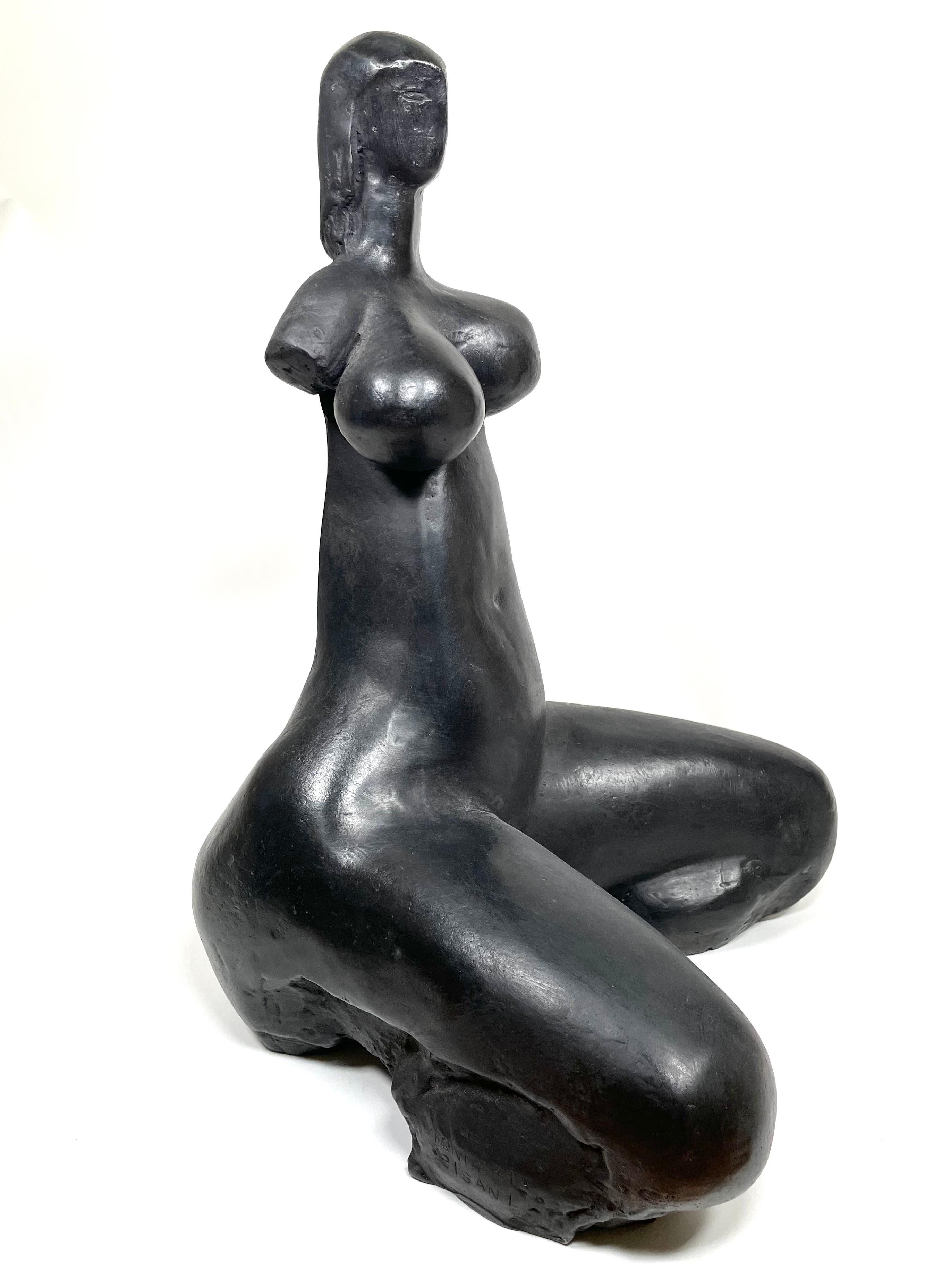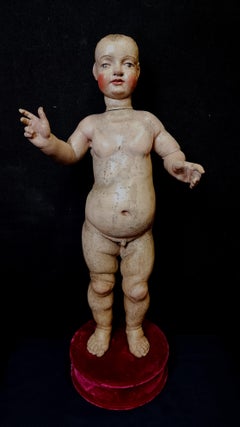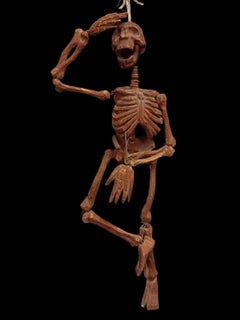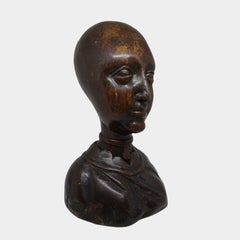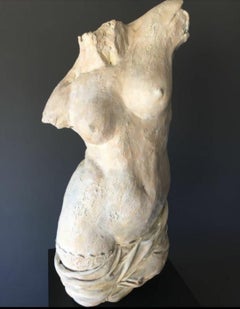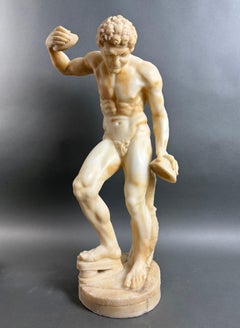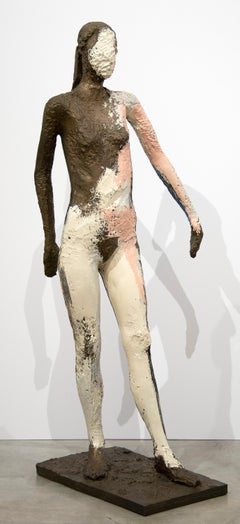Items Similar to FIGURE OF A CHILD - Sculpture ligneous
Want more images or videos?
Request additional images or videos from the seller
1 of 5
UnknownFIGURE OF A CHILD - Sculpture ligneous15th century
15th century
$41,530.32
£30,825.88
€35,000
CA$57,622.44
A$64,560.41
CHF 33,574.23
MX$782,197.93
NOK 427,750.55
SEK 399,319.97
DKK 266,492.98
About the Item
Elegant 15th-century wooden sculpture of a finely executed infant missing his arms. The work, of central Italian provenance, recalls the Donatello manner in the delicacy of the features and the naturalistic rendering of the figure. The slightly sloping posture and weight balance suggest an evolution of the Gothic style toward the early Renaissance. The surface retains an antique patina with traces of the original polychromy, lending additional charm and authenticity. The careful workmanship highlights the artistic quality of the period and the historical value of the work. At 84 cm tall, this sculpture represents a rare example of Renaissance statuary, perfect for collectors and connoisseurs of ancient art. A piece of extraordinary beauty and great visual impact.
- Creation Year:15th century
- Dimensions:Height: 33.08 in (84 cm)Width: 7.09 in (18 cm)Depth: 5.12 in (13 cm)
- Medium:
- Movement & Style:
- Period:
- Condition:
- Gallery Location:Milano, IT
- Reference Number:1stDibs: LU2802215835132
About the Seller
No Reviews Yet
Vetted Professional Seller
Every seller passes strict standards for authenticity and reliability
Established in 1966
1stDibs seller since 2024
- ShippingRetrieving quote...Shipping from: Milano, Italy
- Return Policy
Authenticity Guarantee
In the unlikely event there’s an issue with an item’s authenticity, contact us within 1 year for a full refund. DetailsMoney-Back Guarantee
If your item is not as described, is damaged in transit, or does not arrive, contact us within 7 days for a full refund. Details24-Hour Cancellation
You have a 24-hour grace period in which to reconsider your purchase, with no questions asked.Vetted Professional Sellers
Our world-class sellers must adhere to strict standards for service and quality, maintaining the integrity of our listings.Price-Match Guarantee
If you find that a seller listed the same item for a lower price elsewhere, we’ll match it.Trusted Global Delivery
Our best-in-class carrier network provides specialized shipping options worldwide, including custom delivery.More From This Seller
View AllBambin Gesù Benediciente - Polychrome Sculpture
Located in Milano, IT
Splendid polychrome wooden sculpture depicting the Blessing Child Jesus, made by a Central Italian master in the 14th century. The work, 66 cm high, is distinguished by its harmoniou...
Category
15th Century and Earlier Italian School Nude Sculptures
Materials
Wood
Old Skeleton Puppet
Located in Milano, IT
Fascinating and rare wooden puppet depicting a skeleton, dating from the 19th century and probably of European origin. This piece hand-carved with extraordinary attention to anatomic...
Category
19th Century Figurative Sculptures
Materials
Wood
FEMALE BUST
Located in Milano, IT
Rare and fascinating carved wooden female bust, probably used as a wig holder. The work, made in Holland in the first half of the 17th century, features an elegant stylization of fac...
Category
17th Century Figurative Sculptures
Materials
Wood
LARGE MARBLE SKULL
Located in Milano, IT
Evocative and rare 17th-century carved marble skull from Lombardy, Italy. The work bears an engraved inscription on the back that reads "Carestia grandissima II2 LVIO 1630," a clear ...
Category
17th Century Figurative Sculptures
Materials
Marble
HEAD - STUCCO AND WAX ANATOMICAL MODEL
Located in Milano, IT
Rare anatomical head made of stucco and wax, of 18th-century German workmanship. Fascinating study model used in academia at the time, a fascinating piece of scientific art.
The piec...
Category
18th Century Figurative Sculptures
Materials
Chalk, Wax
LONDON GENTLEMAN
Located in Milano, IT
This fascinating wooden sculpture, 87 cm high, is a work attributed to the celebrated 19th-century Venetian cabinetmaker Francesco Toso, known for his extraordinary woodworking skill...
Category
19th Century Italian School Figurative Sculptures
Materials
Wood
$18,985
You May Also Like
Lacere
Located in Somerset West, WC
Lacere is a limited edition bronze sculpture.
Created with the lost wax casting process.
Category
21st Century and Contemporary Nude Sculptures
Materials
Bronze
$13,370
Large Alabaster Sculpture Satyr with Cymbals Volterran workshop 19th century
Located in Pistoia, IT
Large alabaster sculpture depicting the Satyr with cymbals, 19th-century Volterra workshop.
The satyr with cymbals is a Roman marble sculpture preserved in the Uffizi Museum in F...
Category
1870s Italian School Figurative Sculptures
Materials
Alabaster
Untitled
By Manuel Neri
Located in Palm Desert, CA
A sculpture by Manuel Neri. "Untitled" is a Bay Area Figurative sculpture, painted bronze in a palette of browns, whites, and pinks by Post-War artist Manuel Neri. The artwork is sig...
Category
Late 20th Century Post-War Figurative Sculptures
Materials
Bronze
$145,000
Petite Femme Chiffonnèe
By Antoniucci Volti
Located in Villafranca Di Verona, IT
Numbered and limited to 8 copies
Artwork signed
Authenticity: Sold with certificate of Authenticity
Invoice from the gallery
Sculpture: bronze, metal, bronze patina
Display: The sc...
Category
1950s Other Art Style Nude Sculptures
Materials
Metal, Bronze
Germinal h cm 40
By Antoniucci Volti
Located in Villafranca Di Verona, IT
Numbered and limited to 8 copies
Artwork signed
Authenticity: Sold with certificate of Authenticity
Invoice from the gallery
Sculpture: bronze, metal, bronze patina
Display: The sc...
Category
1970s Other Art Style Figurative Sculptures
Materials
Bronze
Scultura, Venere, Marmo, metà del XX secolo
Located in Rome, IT
Scultura, Venere - 64 cm - Marmo - metà del XX secolo
Italia
Scultura, Torso di Venere, meta del xx secolo, provienienza villa di Viterbo
Sculpture, Torso of Venus...
Category
Mid-20th Century Busts
Materials
Marble
$3,986 Sale Price
20% Off
More Ways To Browse
Pierre Rosenberg
Pierrot Poster
Portrait Dachshund
Portrait Wicker Chair
Racine Silver
Retro Louis Vuitton Posters
Roal English Paintings
Skull Watch
St Catherine Of Alexandria
Stephen Webber
Sunbather Sculpture
Tom Blachford Midnight Modern
Tony Bennett
Union Made Hats Vintage
Vintage Cat Dolls
William Chandler
Alec Monopoly Signed
Annie Oakley
